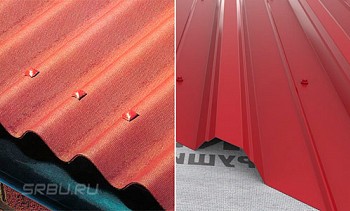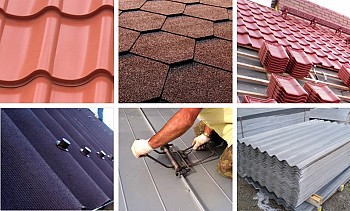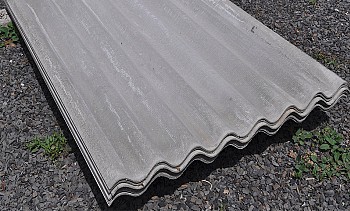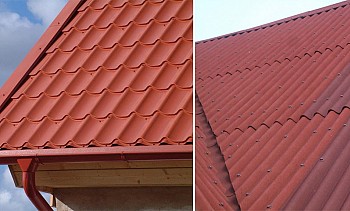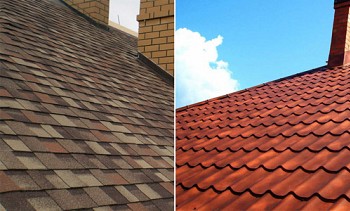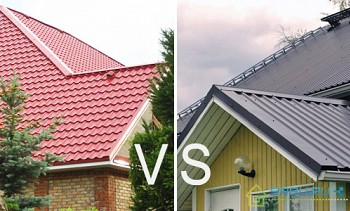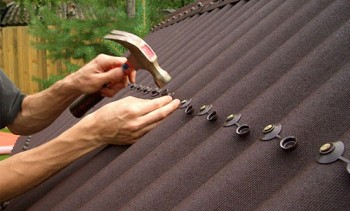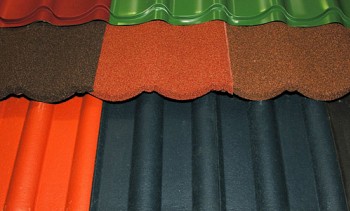From this article you will find out what types of soft roofs exist, in which cases they are used and what positive and negative properties they have.
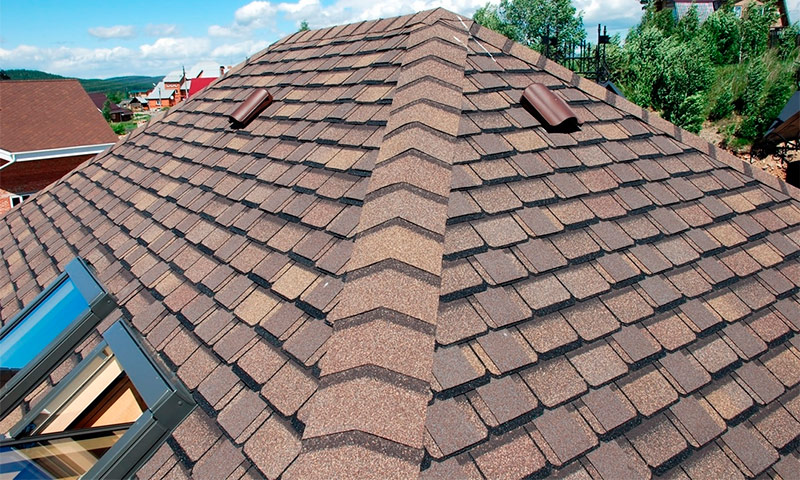
Roll flexible roofing
The ancestor of the rolled roof type is roofing material. Initially, it was made from cardboard impregnated with bitumen, on which was coated and sprinkled. Ruberoid is not a durable coating and quickly wears out, so the manufacturing technology of the material has been improved.
Instead of cardboard, fiberglass or polyester began to be used, and special polymers were added to the bitumen, improving its plastic properties, increasing thermal stability and moisture resistance.
In addition, various sprinkling options began to be used. This top layer is used not only to give extra strength, but also for decorative purposes.

Rolled soft roof.
The main advantages of a flexible roll roof:
- ease of use;
- durability (service life up to 20 years);
- relative cheapness;
- plastic;
- moisture resistance;
- soundproofing.
Rolled roofing is perfect for flat roofs. For steep roofs, other materials are more suitable.

Membrane Roofing
The advantage of a membrane coating is its versatility. It has durability, excellent waterproofing properties, increased resistance to deformation, withstands the effects of low and high temperatures. Membranes on flat roofs are used.
Installation of a membrane roof has a number of features. Membranes are used in adhesive, mechanically fixed and ballast roofing systems. Tight joints and joints are made using special devices. For the installation of roofing sheets, a dense foundation is laid around the perimeter, and ballast materials are used for fixing: gravel or crushed stone.
Depending on the type of materials, several types of membrane roofing are distinguished:
1. PVC roofing membrane with the addition of plasticizers (polyvinyl chloride membranes). This material option is used most often. The possibilities of using this type of roofing have expanded thanks to the development of PVC membranes for cold regions.

PVC membrane.
2. Membrane based on EPDM (ethylene propylene rubber), characterized by high elasticity. EPDM membranes are considered relatively difficult to install.

EPDM membrane.

EPDM membrane suture.
3. TPO membranes formed from thermoplastic polyolefins and being the most modern version of the membrane roof. The material is considered environmentally friendly unlike PVC and more convenient to install compared to EPDM. But the properties of this type of roof very much depend on the technologies used, and not all TPO membranes offered by manufacturers correspond to the declared characteristics.

TPO membrane.
Roof tile
To create an imitation of traditional tile masonry, soft tiles can be used, the types of which are very diverse. In addition to several options for flexible tiles, there is a roll type of this material, which is often used as a roofing for country houses.
Roll tile is a polymer base with bitumen applied on both sides. Fiberglass is often used as reinforcement. The outer surface is covered with mineral powder of several colors, forming a pattern that looks like a volumetric coating at a distance. This effect allows you to fairly accurately simulate the appearance of natural tiles.

Roll tile "Bricklaying".

Roll tile "Beaver tail"

Roll tile "Classical"
The main advantages of rolled tiles:
- profitable price;
- durability (service life up to 50 years);
- ease of installation;
- variety of colors and patterns;
- excellent insulating properties;
- resistance to atmospheric phenomena.
Of the shortcomings of rolled flexible tiles, it should be noted that in appearance this material does not reach the piece of flexible tiles.

The house is covered with roll tiles with a classic pattern.
Flexible tile
Soft tiles are ideal in cases where special importance is attached to the decorative function of the roofing material. Externally, this version of the roof may resemble ceramic tiles, slate material or shingles.
Flexible tiles have a number of advantages, including:
- long term of operation (up to 60 years);
- good sound insulation and moisture resistance;
- resistance to external influences;
- the material is suitable for almost any complex roof shape;
- environmental friendliness and profitability, including due to a very small percentage of waste during installation;
- variety of options to implement various design projects;
- lightness of material;
- maintainability.
Types of flexible tiles
In its composition, flexible tiles almost coincide with its rolled counterpart, but is produced by individual tiles - shingles. The material is based on fiberglass coated on both sides with bitumen with an improved formula. The outer layer is represented by mineral chips, most often made from basalt. The shape of the elements, their color, the number of layers are those properties that can be distinguished by flexible tiles, the types of which are determined precisely by these characteristics.

Shingles of flexible tiles.
1. Flexible tile shape options
Manufacturers offer a large number of decorative cuts of soft tiles. But the most common tiles are those in the form of a rectangle, hexagon, rhombus, "dragon's tooth", "brick", "shingles", etc. On their basis, many other elements have been created that allow you to create unusual designs or imitate the natural roofing.
2. Types of soft tiles depending on color
The color scheme used for flexible tiles, in most cases, is selected to match the natural shades. Modern technologies for coloring basalt chips provide color fastness and volumetric pattern. Using different color shades, 3D effects and decorative cutting, you can create roofs that will look beautiful and original.
3. Types of flexible tiles, taking into account the number of layers
Modern soft tiles can have from one to three layers. The first option is the most economical and is used most often.

One-layer flexible tile.
A two-layer roofing material is obtained by gluing sheets of material. It is used in cases where it is required to provide the roof with high resistance to external influences and improve sound insulation.

Two-layer flexible tile.
The material of the new generation is considered a three-layer tile. Adding another layer not only gives the product special strength, but also provides additional volume and clarity of the relief.

Three-layer flexible tile.







